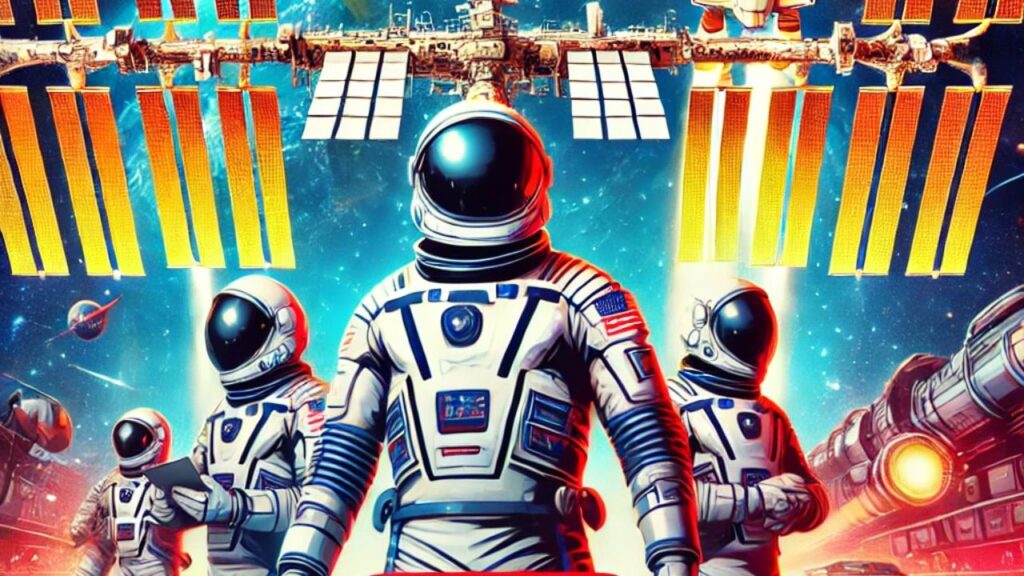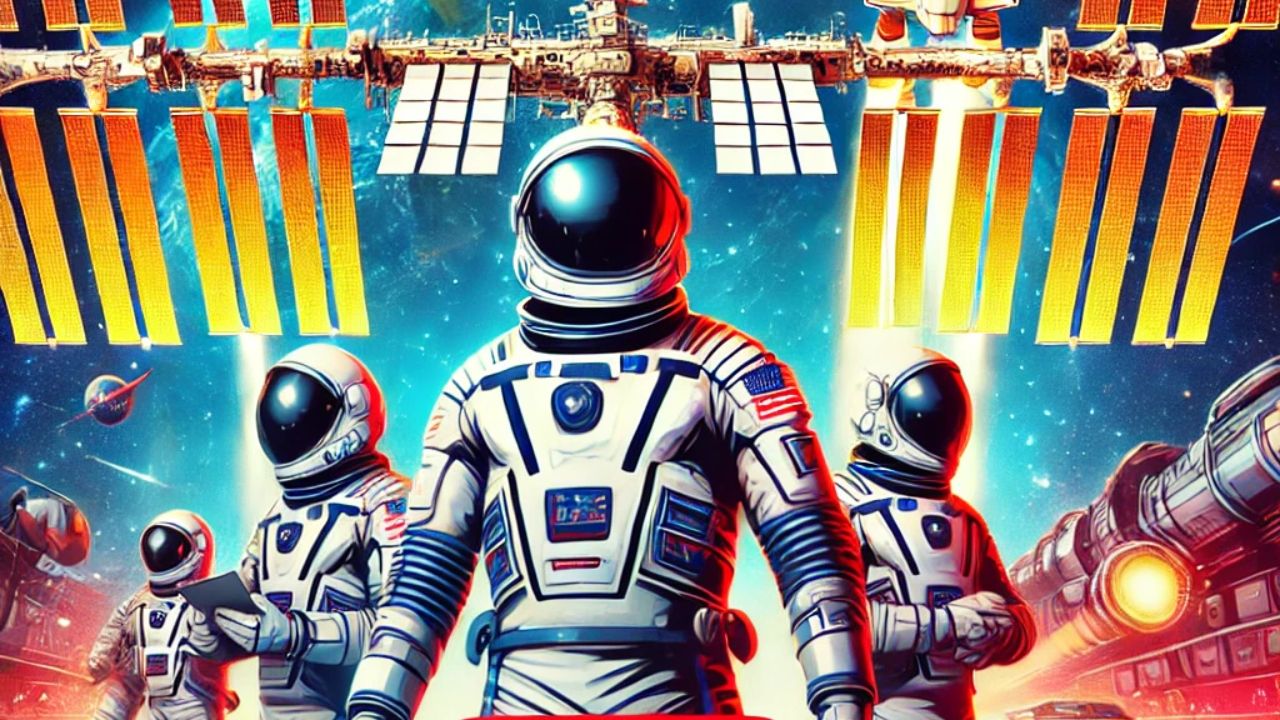NASA, SpaceX Crew-10, International Space Station, ISS, Anne McClain, Nichole Ayers, Takuya Onishi, Kirill Peskov, NASA astronauts, space mission, space exploration, Artemis program, JAXA, Roscosmos
Discover the latest updates on NASA’s SpaceX Crew-10 mission set to launch in February 2025. Meet the diverse crew members, including astronauts from NASA, JAXA, and Roscosmos, as they prepare for a long-duration stay aboard the International Space Station. Learn about their backgrounds, mission objectives, and the scientific research and technology demonstrations that will advance human space exploration.

NASA’s SpaceX Crew-10 Mission: Preparing for a Long-Duration Space Station Stay
NASA has announced its crew assignments for the upcoming SpaceX Crew-10 mission, a pivotal endeavor that will see four astronauts embark on a long-duration mission aboard the International Space Station (ISS). Scheduled to launch no earlier than February 2025, this mission marks the 10th crew rotation facilitated by SpaceX under NASA’s Commercial Crew Program. The crew, composed of astronauts from NASA, the Japan Aerospace Exploration Agency (JAXA), and Roscosmos, will conduct critical scientific research and technology demonstrations aimed at advancing human spaceflight and benefiting life on Earth.
Commander Anne McClain
Leading the Crew-10 mission is NASA astronaut Commander Anne McClain, a seasoned astronaut selected by NASA in 2013. This mission will be McClain’s second spaceflight. A colonel in the U.S. Army, McClain holds a bachelor’s degree in Mechanical Engineering from the U.S. Military Academy at West Point, as well as master’s degrees in Aerospace Engineering, International Security, and Strategic Studies. Her extensive flight experience includes over 2,300 flight hours in 24 different rotary and fixed-wing aircraft, with more than 800 hours in combat. McClain’s previous space mission, Expeditions 58 and 59, saw her spend 204 days aboard the ISS, during which she conducted two spacewalks totaling 13 hours and 8 minutes. Her leadership and technical expertise will be invaluable to the Crew-10 mission.
Pilot Nichole Ayers
Serving as the pilot for the mission is NASA astronaut Nichole Ayers, a major in the U.S. Air Force and a member of NASA’s 2021 astronaut class. Ayers is the first of her class to be named to a space mission. She holds a bachelor’s degree in Mathematics from the U.S. Air Force Academy, where she also minored in Russian and played on the varsity volleyball team. She furthered her education with a master’s degree in Computational and Applied Mathematics from Rice University. Ayers has an impressive flight record with over 1,400 total flight hours, including more than 200 hours in combat. Her experience as an instructor pilot and mission commander in advanced aircraft like the T-38 ADAIR and F-22 Raptor will be crucial for the success of the mission.
Mission Specialist Takuya Onishi
JAXA astronaut Takuya Onishi will be serving as a mission specialist on his second spaceflight. Selected by JAXA in 2009, Onishi previously served as a flight engineer for Expeditions 48 and 49. He made history as the first Japanese astronaut to robotically capture the Cygnus spacecraft and was instrumental in constructing a new experimental environment aboard Kibo, the Japanese experiment module on the ISS. Onishi holds a bachelor’s degree in Aeronautics and Astronautics from the University of Tokyo and has extensive flight experience as a pilot for All Nippon Airways. His expertise in flight operations and space missions makes him a valuable asset to the Crew-10 team.
Mission Specialist Kirill Peskov
Rounding out the Crew-10 team is Roscosmos cosmonaut Kirill Peskov, who will be embarking on his first spaceflight. Selected as a cosmonaut in 2018, Peskov brings a wealth of experience in aviation and space training. He earned his degree in Engineering from the Ulyanovsk Civil Aviation School and has served as a co-pilot on Boeing 757 and 767 aircraft. His rigorous training includes skydiving, zero-gravity training, scuba diving, and wilderness survival, all of which prepare him for the challenges of spaceflight.
The Mission
The SpaceX Crew-10 mission is a significant step in NASA’s ongoing efforts to maintain a continuous human presence aboard the ISS, which has been a hub for scientific research and technological development for over two decades. The crew will engage in a variety of scientific investigations and technology demonstrations designed to advance our understanding of long-duration spaceflight and its effects on the human body. This research is crucial for future missions beyond low Earth orbit, including NASA’s Artemis program, which aims to return humans to the Moon and eventually send astronauts to Mars.
Advancing Scientific Knowledge
One of the primary objectives of the Crew-10 mission is to conduct experiments that are not possible on Earth. The microgravity environment of the ISS allows scientists to study phenomena in ways that are not feasible under Earth’s gravitational pull. These experiments span a wide range of disciplines, including biology, physics, and materials science. The insights gained from these studies will not only advance our knowledge of fundamental scientific principles but also have practical applications on Earth, such as improving medical treatments and developing new materials.
Preparing for Future Missions
In addition to scientific research, the Crew-10 mission will focus on technology demonstrations that are critical for future deep space missions. These demonstrations will test new systems and equipment designed to support human life and operations in space for extended periods. This includes evaluating life support systems, habitats, and other technologies that will be essential for missions to the Moon and Mars. By testing these technologies on the ISS, NASA can identify and address any issues before they are deployed on more distant missions.
International Collaboration
The Crew-10 mission exemplifies the spirit of international collaboration that has been a hallmark of the ISS program. The participation of astronauts from NASA, JAXA, and Roscosmos highlights the global nature of space exploration. This collaboration extends beyond the crew to the numerous international partners who contribute to the ISS’s operations and scientific endeavors. By working together, these agencies can pool their resources and expertise to achieve common goals and push the boundaries of human exploration.
The Future of Space Exploration
As NASA continues to focus on low Earth orbit operations with the help of commercial partners like SpaceX, the agency is also looking ahead to the next frontier: the Moon and Mars. The Artemis program is already underway, with the goal of landing the first woman and the next man on the Moon by the mid-2020s. The lessons learned from the ISS and missions like Crew-10 will be invaluable as NASA prepares for these ambitious endeavors.
The Crew-10 mission is not just about maintaining a presence in low Earth orbit; it is about laying the groundwork for the future of human space exploration. The scientific discoveries and technological advancements made on this mission will help pave the way for sustainable exploration of the Moon and Mars, bringing humanity one step closer to becoming a multi-planetary species.
Conclusion
The NASA SpaceX Crew-10 mission represents a critical milestone in the ongoing journey of human space exploration. With a diverse and experienced crew, the mission aims to further our understanding of space and prepare for the challenges of long-duration missions beyond low Earth orbit. The research and technology demonstrations conducted during this mission will not only benefit life on Earth but also set the stage for future missions to the Moon, Mars, and beyond. As we look to the future, the spirit of international collaboration and the drive to push the boundaries of what is possible will continue to guide us on this remarkable journey.
Read More
- NASAs DART Mission Unveils New Insights on Binary Asteroid System Didymos and Dimorphos
- NASA and Northrop Grummans 21st Resupply Mission to ISS: Launch Details and Scientific Highlights
- NASA and JAXA Achieve Milestone with Successful Laser Communication Between Moon and Orbiter
- NASAs Perseverance Rover Finds Potential Signs of Ancient Life on Mars










